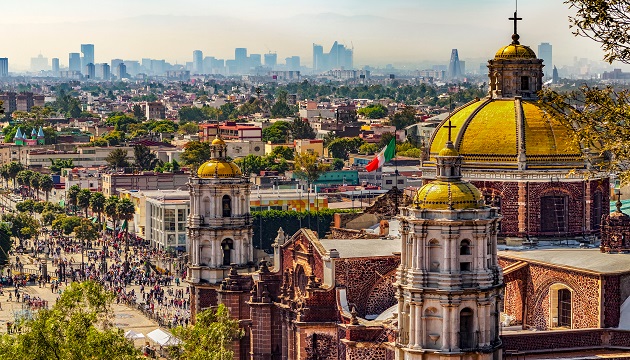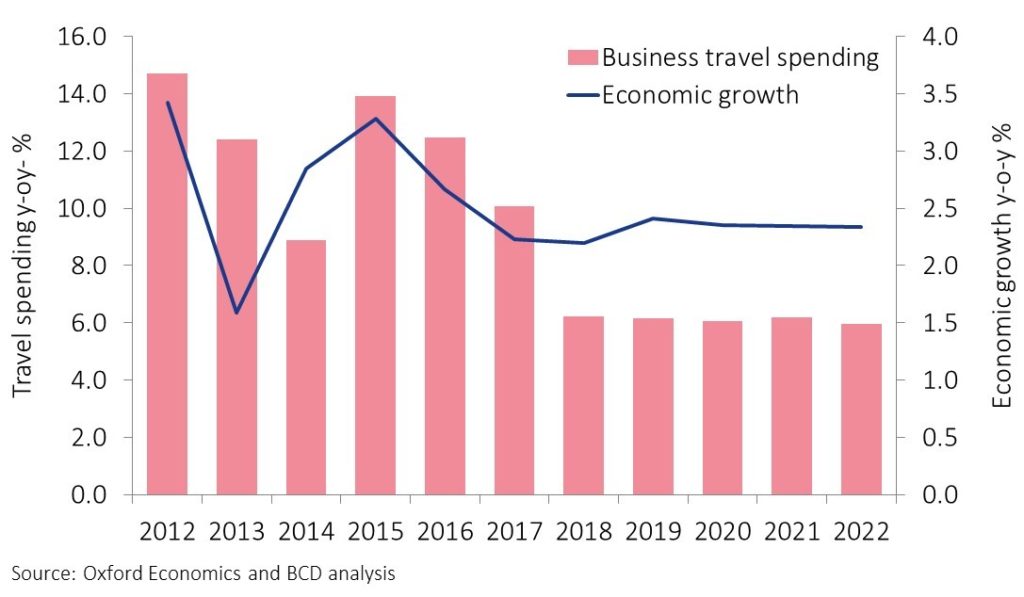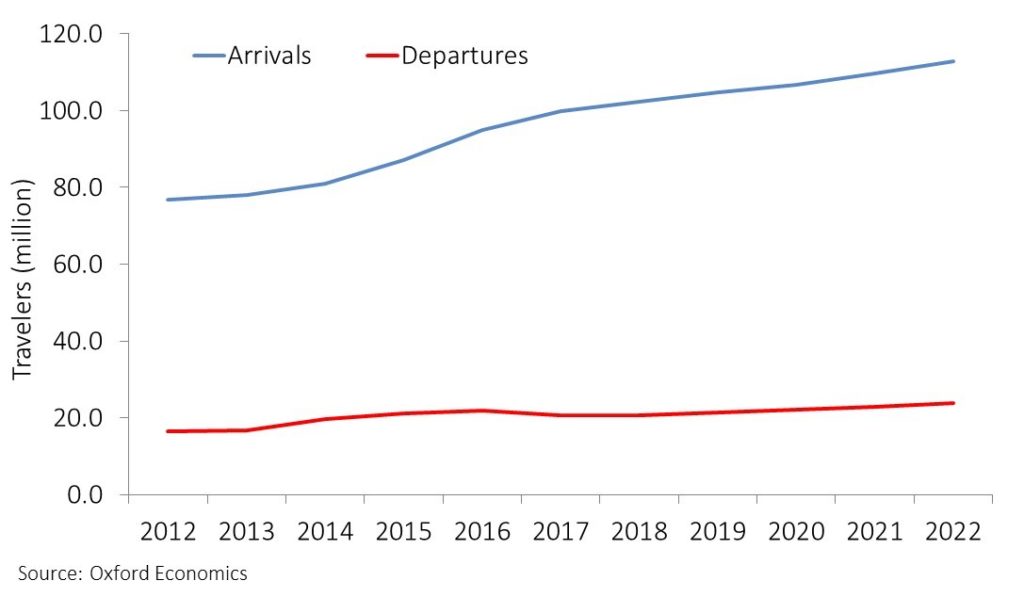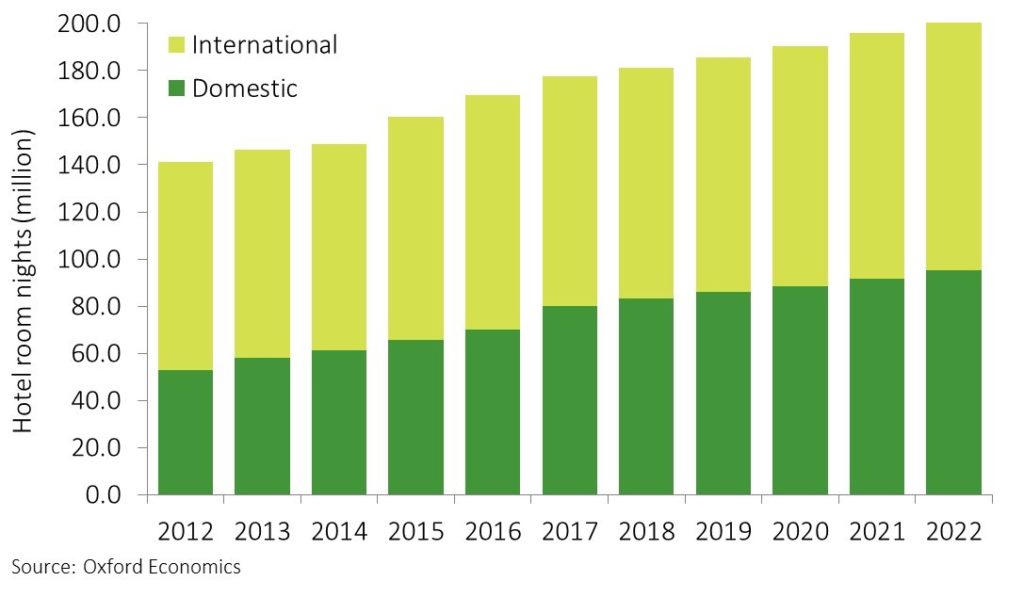
Mexico at a glance
Business travel spending to average 6% annual growth through 2022.
Businesses spent almost 333 billion Mexican pesos—US$18 billion—on travel in Mexico in 2017, according to BCD Travel analysis of BCD analysis of Tourism Economics data. Domestic travel accounted for 80%, with the remainder evenly split between inbound and outbound international trips. Business travel spending has been strong in recent years—ranging between 10% and 15% growth per year since 2012. The strength of international travel, especially in 2015 and 2016, has masked a steady slowdown in domestic travel spending. That trend is expected to weigh on total business travel spending, which is forecast to rise an average of 6% per year through 2022.
Economic environment
Economic growth and business travel spending
Click on image to enlarge
- Mexico is Latin America’s second-largest economy (after Brazil) and the world’s sixth-largest emerging market, according to the International Monetary Fund.
- Services now account for almost two-thirds of the country’s economic output; manufacturing makes up a fifth.
- Mexico’s membership in the North American Free Trade Agreement (NAFTA) has made the U.S. its most important trading partner. But this also means the country is highly exposed to economic cycles and policy changes north of its border.
- Oxford Economics predicts economic growth of 2.2% in 2018, as business investment increases and global trade improves. These upward trends should offset lackluster domestic consumer spending and reduced remittances coming into the country from Mexicans working abroad.
Air
International travel
Click on image to enlarge
- International travel has grown, on average, 5.3% per year since 2012. Arrivals and departures have expanded at similar rates.
- Travel is set average 2.5% growth per year through 2022, retaining the parallels in arrivals and departures.
- The U.S. dominates international travel, accounting for 84% of both arrivals and departures. A revised air services agreement enabled more flights between Mexico and the U.S, and the increased competition is putting pressure on airline yields.
- Grupo Aeromexico is Mexico’s largest airline; it combines Aeromexico and the regional carrier Aeromexico Connect. Three rapidly expanding low-cost carriers, Volaris, InterJet and Viva Aerobus, are fueling competition. Aeromexico is responding with new fares aimed at ultra-price-sensitive travelers.
Accomodation
Hotel demand
Click on image to enlarge
- Between 2011 and 2016, the number of star-rated hotels increased 22% to almost 13,500, according to Mexico’s Secretariat of Tourism.
- Local company Posada is the country’s leading chain, with a portfolio of 150 hotels spread across economy, midscale, upscale and upper upscale service tiers. IHG is the leading global chain with 119 hotels in Mexico.
- Oxford Economics reported over a 25% increase in hotel demand between 2012 and 2017.
- Hotel rates increased steadily in 2017, despite disruption caused by an earthquake that hit Mexico City in September. BCD Travel’s 2018 Industry Forecast predicts hotel rates will rise between 1% and 3% in Mexico this year.




